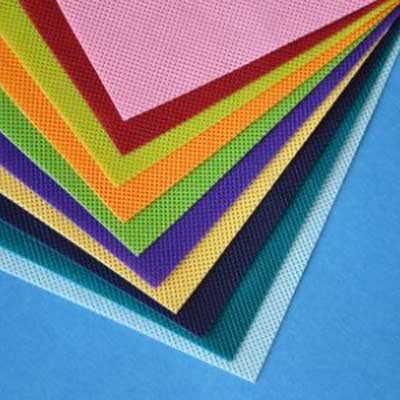Spunbond
The Most Flexible Nonwoven
Spunbond is a durable and very flexible material where many properties, like softness, permeability and durability, can be controlled.

Order
sample

Order
sample
Spunbond is created by using four different types of plastic alone or mixed together to achieve different properties.
Polypropylene: the spunbond that can be made the most elastic and that is also the most cost-effective.
Polyester: produces a rigid spunbond with a high melting point.
Polyethylene: produces a softer spunbond with a low melting point.
PLA: produces a starch-based biodegradable spunbond
It works well in products with high demands for low lint (lint-free), such as in areas like wound care, because it gives off practically no fiber. It is also water repellent, however materials can be added to enable the material to allow liquid and moisture to permeate. Because it is inorganic, it can be exposed to moisture without mold growing.
It is possible to add flame retardants, and make it more UV resistant, alcohol resistant and antistatic. Properties such as softness and permeability can also be adjusted by making the spunbond denser or thicker.
See also Coated nonwoven
WHERE IS IT USED?
Often used as a backing for different materials or for products that need to allow moisture/liquid to permeate.
Automotive: spunbond is used in for example seats in cars and boats to cover the springs and as a dust cover.
Construction: The construction industry uses it, for example, in roofing felt or as a backing for wind barrier.
Filtration: The material is used as a backing for different filters due to its stability and air permeability. The filters are used in both the manufacturing process and end products for the filtration of both water and air. Spunbond is also used in breathing masks.
Absorbents: Because of its strength, good permeability and as it can be bonded together, spunbond is often used for bags of moisture or odor absorbents e.g. in the packaging and transport of food products or clothing. If you coat the material, you can create properties that allow vapor to pass through, but not liquid (Read more about Coated spunbond).
Healthcare & Hygiene: It is also often used as outer material or backing of absorbents for wounds or other fluids. As well as for disposable garments or sterile covers.
Furniture & Beds: Spunbond is used as a dust cover, around springs and on the back/underside of furniture and beds. It is often a cheaper alternative than using fabric.
|
Furnitures and beds |
Construction |
Automotive |
Hygiene |
Healthcare |
|
Absorbents |
Filtration |
Wipes |
Food products |
Printing |
Spunbond is made from different plastic granules (polypropylene, polyester, polyethylene, PLA). The granules are melted down and pressed out as long, very thin fibers. The fibers are distributed on a conveyor belt. The material is then fluffy. In the next step, heat is added and the spunbond is pressed between rollers that compress the material.
We offer spunbond based on polypropylene, polyethylene, polyester or PLA. It normally only contains one type of fiber, but we can combine fibers in special cases.
We have versions that is flame retardant, antistatic, and resistant to UV rays, heat or alcohol. With a variety of elasticities, thicknesses, densities and permeability levels. We can even produce it in different colors.
We also offer spunbond with anti-smell treatment that neutralizes and removes bad smells
Our spunbond is available in rolls up to 3.2 meters in width and up to 15,000 meters in length in weights of 8–300 g/sqm.
Are you not sure exactly what you are looking for? Let us know what properties you need or what demands you have and we will help you find the right product.